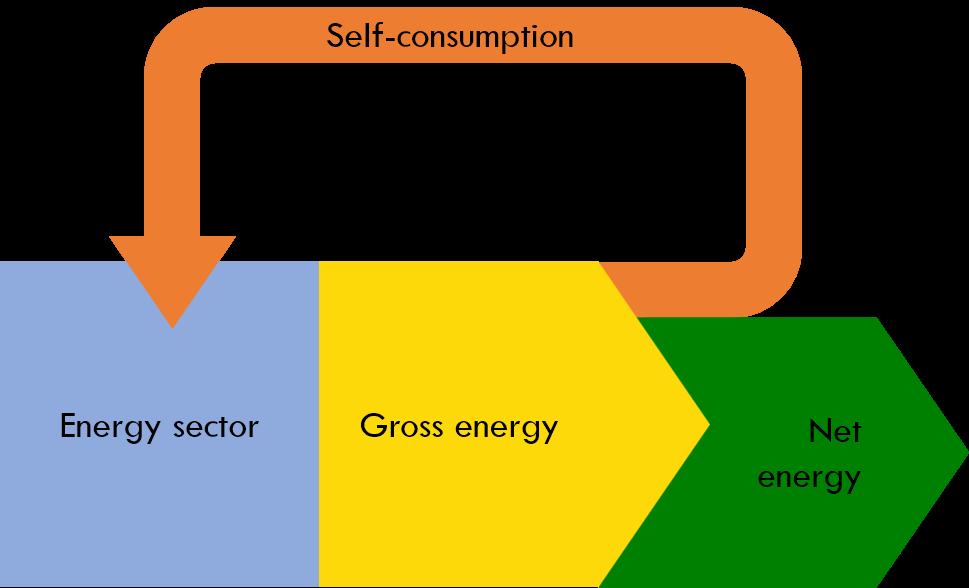Net Energy
Revised 2 December 2023
Energy is required to explore and identify where the most concentrated forms of fossil fuels are located. The mining of materials requires the use of energy. More energy is then required to construct the necessary plant and machines to extract the fossil fuels from the ground and to run the plant and machines. The reserves of fossil fuels in the ground which are extracted represent gross energy. Net energy, also known as a surplus, is what is left over for use after extraction (Hall 2016).

Figure 1: Net Energy (based on Hall 2016)
All life forms require surplus energy to survive. For example, a cheetah chasing down a gazelle expends energy in doing so. The cheetah and its offspring survive for only so long as the energy provided by eating the gazelle exceeds the energy it has expended in catching the gazelle. The cheetah also requires more surplus energy for its own day-to-day metabolism and that of its cubs until its next catch. This would be bare subsistence living. A safety margin would be needed to avoid starvation when gazelles are difficult to catch.

Figure 2: A Cheetah Hunting Down a Gazelle for Surplus Energy
Early humans required surplus energy to sustain their minimum requirements of food, clothing, shelter, tools, and weapons for hunting. We now make use of a much greater surplus of energy to sustain not only our minimum necessities of life, but also our complexes of infrastructure, plant, and machinery and our level of technology which underpin our much higher consumer level of life in the pursuit of happiness and wellbeing.